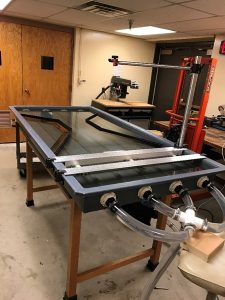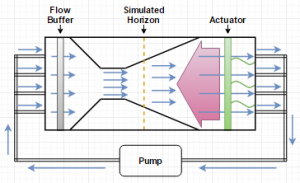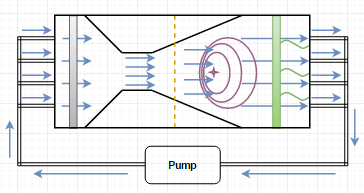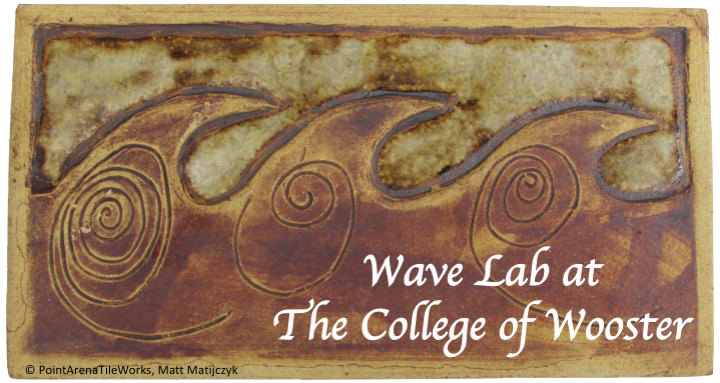Step 1 – water waves (2017 – 2018):
 This project started from an idea Marc Manheim ’17 and Dr. Lindner discussed in 2017 after Marc found a paper from 2002 proving experimentally that gravity waves (Abbott et al., Observation of gravitational waves from a binary black hole merger, Phys. Rev. Lett. 116, 061102, 2016) in water can behave analogously to electromagnetic waves traveling through space-time and visualize a black hole horizon (Schützhold and Unruh, Gravity wave analogues of black holes, Phys. Rev. D 66, 044019, 2002). The experiment was done in a large water tank (30×1.8×1.8) m3 (Rousseaux et al., Observation of negative-frequency waves in a water tank: a classical analogue to the Hawking effect?, N. J. Physics 10(5), 053015, 2008). The topic became even more interesting if one takes the 2015 discovery of gravitational waves (Abbott et al., Observation of gravitational waves from a binary black hole merger, Phys. Rev. Lett. 116, 061102, 2016) into account.
This project started from an idea Marc Manheim ’17 and Dr. Lindner discussed in 2017 after Marc found a paper from 2002 proving experimentally that gravity waves (Abbott et al., Observation of gravitational waves from a binary black hole merger, Phys. Rev. Lett. 116, 061102, 2016) in water can behave analogously to electromagnetic waves traveling through space-time and visualize a black hole horizon (Schützhold and Unruh, Gravity wave analogues of black holes, Phys. Rev. D 66, 044019, 2002). The experiment was done in a large water tank (30×1.8×1.8) m3 (Rousseaux et al., Observation of negative-frequency waves in a water tank: a classical analogue to the Hawking effect?, N. J. Physics 10(5), 053015, 2008). The topic became even more interesting if one takes the 2015 discovery of gravitational waves (Abbott et al., Observation of gravitational waves from a binary black hole merger, Phys. Rev. Lett. 116, 061102, 2016) into account.
The concept of creating a water analog of an event horizon is to have water waves propagating against a gradient of increasing water flow velocity. At the point where the wave speed and the flow speed are identical, the horizon can be observed. To scale it down, Marc constructed a much smaller water tank in our workshop with dimensions of (2.0×1.0×0.2) m3.
 In his experiment, gravity water waves were generated in the tank first by an actuator (green object in the right creating water waves moving to the left) and propagated in a direction opposed to a flow (blue arrows) with increasing velocity due to the narrowing channel width. The rate of volumetric flow in the channel varies between the minimum (highest value) and maximum (lowest value) cross-sectional area as shown on the left. The point of equal but opposite velocities could be seen at, for example, the yellow dashed line.
In his experiment, gravity water waves were generated in the tank first by an actuator (green object in the right creating water waves moving to the left) and propagated in a direction opposed to a flow (blue arrows) with increasing velocity due to the narrowing channel width. The rate of volumetric flow in the channel varies between the minimum (highest value) and maximum (lowest value) cross-sectional area as shown on the left. The point of equal but opposite velocities could be seen at, for example, the yellow dashed line.

